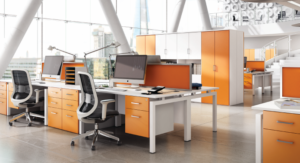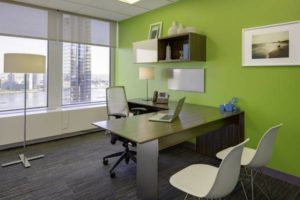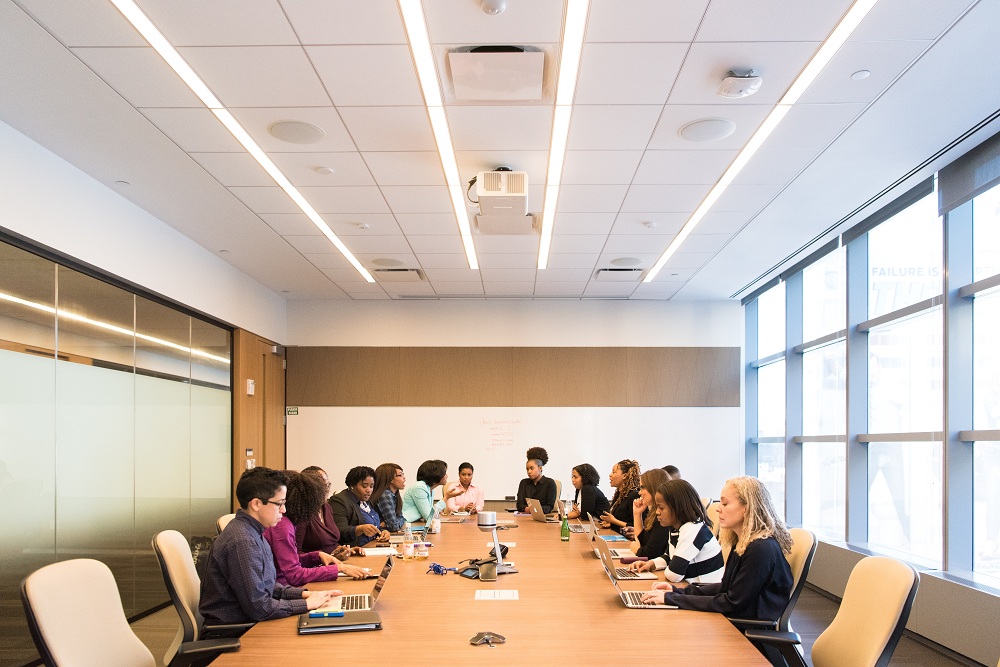When companies design their offices, they give major consideration for the company colors. After all, these are the colors that reflect the brand identity of the company.
But while it is essential to use your company logo when you design your office and use colors that blend well with it, there is actually more to choosing the right colors for your office than meets the eye. In particular, you need to look into color psychology in order to understand how using different colors in your office may affect the overall mood of the people in your office. First off, let us define color psychology.
What is color psychology?
By definition, color psychology is a study of how using different colors may affect, influence, and impact people’s thoughts, feelings, and behavior. Time and again, using color psychology when designing your office and deciding on your office wall colors prove to be useful in enhancing employees’ levels of productivity and efficiency. Failure to properly incorporate color psychology in designing your office’s interiors, on the other hand, has been linked to sluggishness and lack of motivation and energy in the workplace.
To dig deeper into color psychology, here’s a more in-depth look at some of the colors that affect people in a positive manner:
Green
The color green is associated with a boost in creative thinking and the promotion of harmony and balance. This color is best used in that specific area in you office spare where brainstorming and conceptualizations take place. In addition to increasing creativity, harmony, and balance, using green in your corporate space is also said to reduce eye strain and anxiety.
Blue
Using blue in abundance proves to be a good move as it is closely associated with calmness and trust. The color blue is generally a soothing color. It is good for lowering heart rate and blood pressure as well. It may also be ideal when used in spaces where you and your employees brainstorm for plans, ideas, and concepts.
Yellow
The color yellow is a great color if you want to energize the people i your office space. It is great when used in active and creative environments. More than that, using yellow in your corporate space also adds to a general feeling of positivity and optimism.
Note that using too much yellow color in your office may lead to loss of appetite, which may lead to low energy levels in the long run.
Red
If you think the color red is a strong and bold color that has no space in your office, think again. The color red is closely associated with increased brain activity. It also boosts heart rate and blood flow. You may use red in corporate spaces where you need your employees to stay focused, so it would be ideal to use when your employees are working at night.
Keep in mind, though, that going overboard with this color could easily lead to feelings of hostility and anger, so keep the use of this color to a minimum.
Orange
Similar to the color yellow, the color orange also has a positive effect on people’s energy. Orange is an energizing color that not only inspires positivity, but adds to the overall ambience of your office as well.
Be careful when using too much orange, though, because it is known to impact the appetite extensively. Too much orange can stimulate appetite, so use it as an accent color on walls or in decor. You don’t want your creative process derailed by a snack attack.
White
The color white is great for adding space and making your office look clean and put-together. However, an office that is covered in stark white is known to make people a bit uncomfortable. It is also said to make people more prone to errors.
Gray
Using gray would work as an accent color, but using it extensively might not be a good idea. Gray is associated with feelings of boredom, sadness, and depression. It’s not a good color to use in your office walls but it may be used to highlight bright colors.
More tips when designing your office
 Using color psychology for your walls is a good first move. But it doesn’t end here. There is more to using colors than just your office walls. One thing you may also pay attention to are the ornaments you put in your office. These ornaments and embellishments may also carry the color that best go well with the feelings you want to evoke in your employees when they go to work.
Using color psychology for your walls is a good first move. But it doesn’t end here. There is more to using colors than just your office walls. One thing you may also pay attention to are the ornaments you put in your office. These ornaments and embellishments may also carry the color that best go well with the feelings you want to evoke in your employees when they go to work.
A case in point is the potted plants in your office. Putting potted plants is a great idea to make your office appear fresh and more eco-friendly but aside from that, you can use potted plants – particularly the pots themselves – when incorporating color psychology in your office. By choosing the color of your pots, you can make it blend well with your office space and its overall look and feel while adding to the positive feelings you want to bring out in your employees.
Deciding on the colors of the curtains or the blinds is another great idea. There are many different ways to do it. You just need to put your imagination to work.

When choosing the colors you want to include in your office, consider your brand identity as well. Make sure the color you choose don’t go against the image of your brand as this may confuse your customers and send the wrong message.
On a final note. it is also important to emphasize while the use of color psychology should guide you on how to decide the colors you may want to include in your office, you should also learn how to do it moderately. For example, we understand that you want the people in your office to be energetic but that doesn’t mean you should exclusively paint your walls yellow. Too much of anything will do more harm than good, so keep it subtle instead of flashy. Go for colors that don’t clash so the overall look is still good on the eyes.

